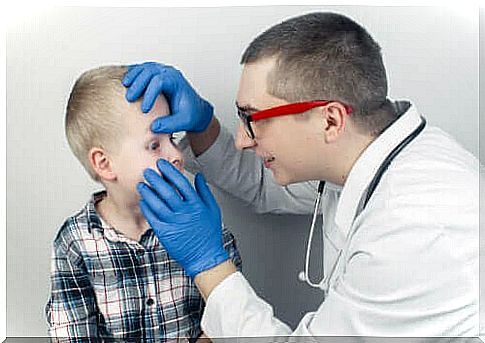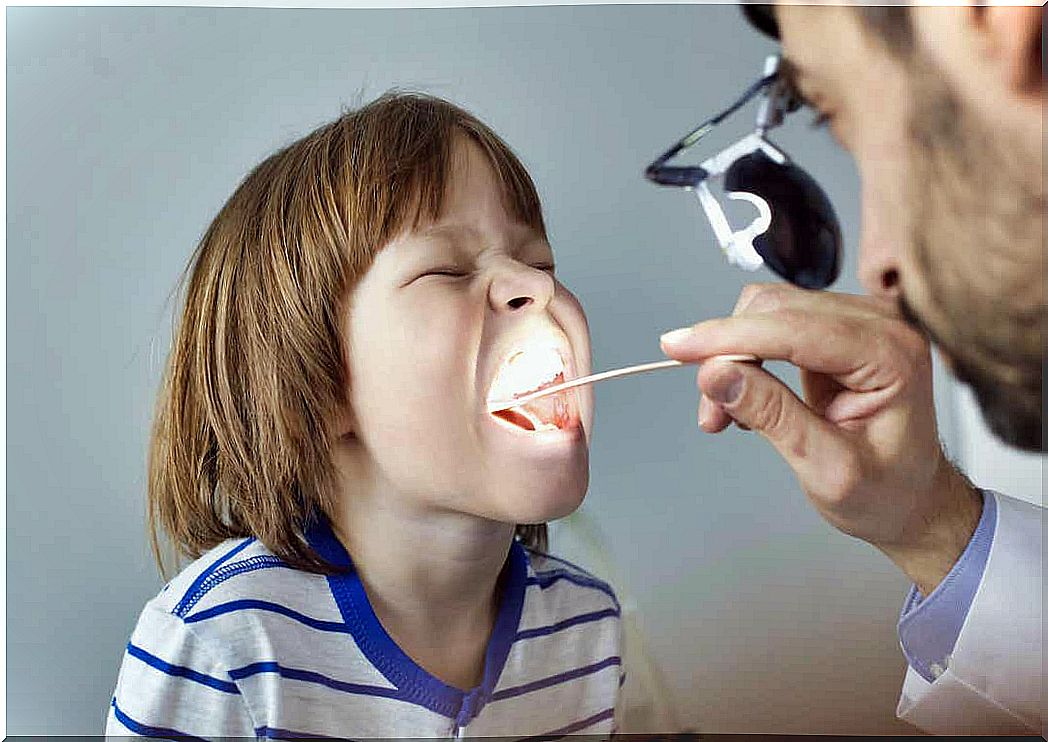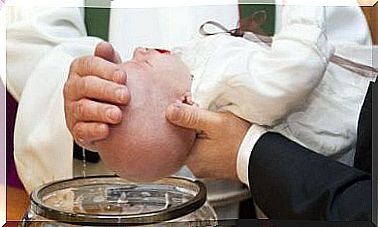5 Common Childhood Illnesses Caused By Bacteria

Due to the underdeveloped immune system of children, childhood illnesses caused by bacteria are very common in the first years of life. While they are mild in most cases, it is important to be vigilant to avoid developing complications which, while rare, can occur. Do you know the most common childhood illnesses caused by bacteria?
Five common childhood illnesses caused by bacteria
Below are some fairly common ailments, so you may have heard of them. In any case, the aspects of treatment are very specific, but they share the fact that they usually require the use of antibiotics.
1. Otitis

Otitis is the inflammation of one of the segments of the ear. Classically we refer to three different parts of this organ: the outer, middle and inner ear. Infections of the outer and middle ears are common. Infectious diseases of the inner ear are rare and cause other symptoms.
This condition is usually caused by an infection by bacteria such as Staphylococcus aureus and Pseudomonas aeruginosa . Depending on several factors, the infection can range from simple redness and itching of the ear canal (otitis externa) to severe pain. This may include the release of pus and rupture of the eardrum (otitis media).
2. Whooping cough, one of the childhood diseases caused by bacteria
Bordetella pertussis is the bacteria responsible for whooping cough. It is a highly contagious respiratory infection that, from a clinical point of view, is notable for the appearance of a cough that makes breathing very difficult while it lasts. In fact, the cough is so strong that it can even cause vomiting or minor bleeding.
In many cases it is not possible to diagnose an infection with B. pertussis. It is at this point that doctors use the term pertussis syndrome. This is a condition that has the same symptoms as whooping cough, but it is caused by other bacteria or agents, such as the adenovirus.
It is a vaccine-preventable disease, so its incidence and prevalence have declined sharply in recent decades. However, it is still endemic in many countries, especially in developing countries.
3. Meningitis
Meningitis is one of the most dreaded conditions on the list as it can lead to serious complications without proper treatment. It is not a disease caused solely by bacteria. Some of the most commonly implicated agents are Streptococcus pneumoniae and Neisseria meningitides .
Thanks to vaccination strategies, the incidence of meningitis and its complications have decreased over time. However, it remains a major cause of illness and mortality in children.
Symptoms depend a lot on the age of the patient and usually become easier to diagnose as the child gets older. In schoolchildren and adolescents, the presence of a stiff neck, vomiting, high fever and abnormal movements may indicate meningitis.
4. Conjunctivitis
Conjunctivitis is a common condition in both children and adults. It is not always contagious and when it is, most cases are due to viral infections. Conjunctivitis due to bacteria can be a little more difficult to treat. In some cases it is necessary to administer antibiotics.
Symptoms include localized redness, itching, excessive tear production and, in some cases, pus discharge. Since this is a communicable disease, it is best to follow personal and family hygiene measures to avoid contamination.
5. Sore Throat

The term angina is often used in children to refer to some types of infections characterized by inflammation of the tonsils. Most clinical forms are mild, characterized by sore throat, general malaise, bad breath, fever and swollen glands in the neck.
It is important to distinguish it from other diseases such as angina pectoris (English link) or Plaut-Vincent’s Angina. The first refers to the symptoms of a disease that affects blood flow to the heart, which in simple terms could refer to a heart attack. However, it is not the same.
Plaut-Vincent’s angina is a widespread infection that affects the gums and organs mentioned above. However, without treatment, it can make swallowing food very difficult and endanger the patient’s airways. Of course, the latter two conditions are more common in adults.
Teething caused by bacteria vary widely
These diseases are unpredictable. The vast majority only indicate discomfort that can lead to your child spending a few days in bed, while others can become more complicated and require more care.
The main thing is to keep an eye out for additional symptoms. Fever is one of the most common. Seeing a pediatrician as soon as possible is the best option to make sure everything is going well.









